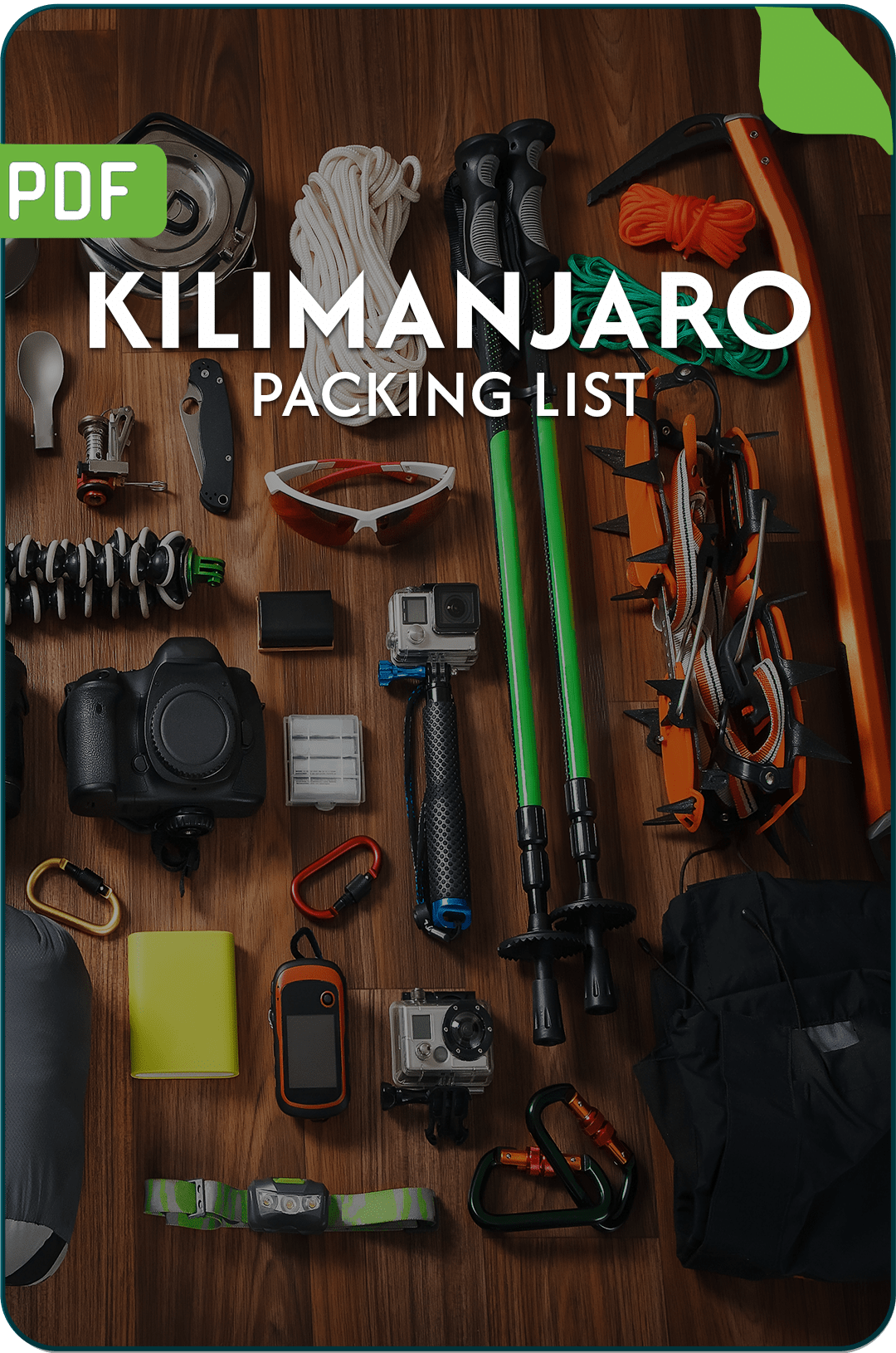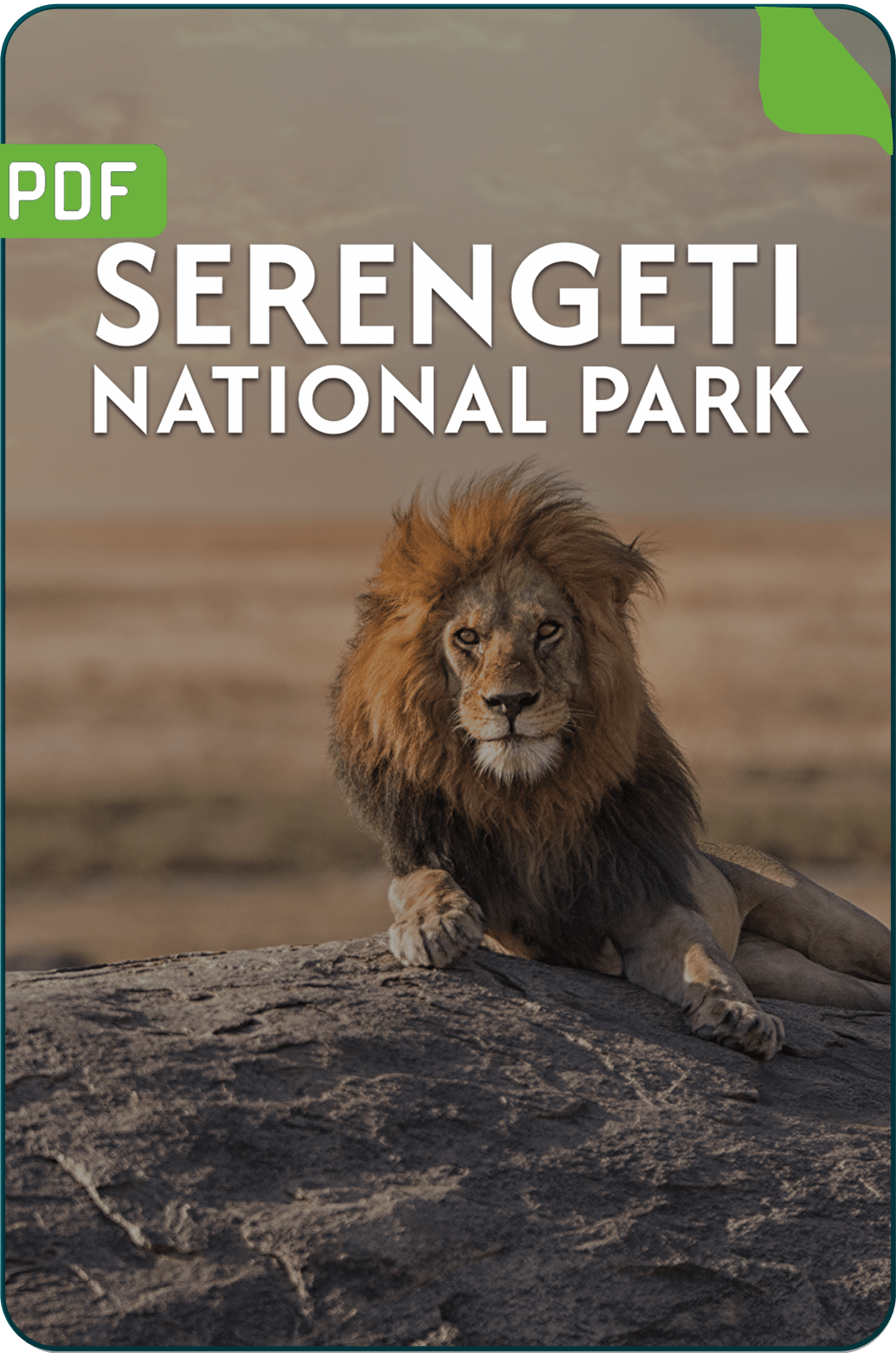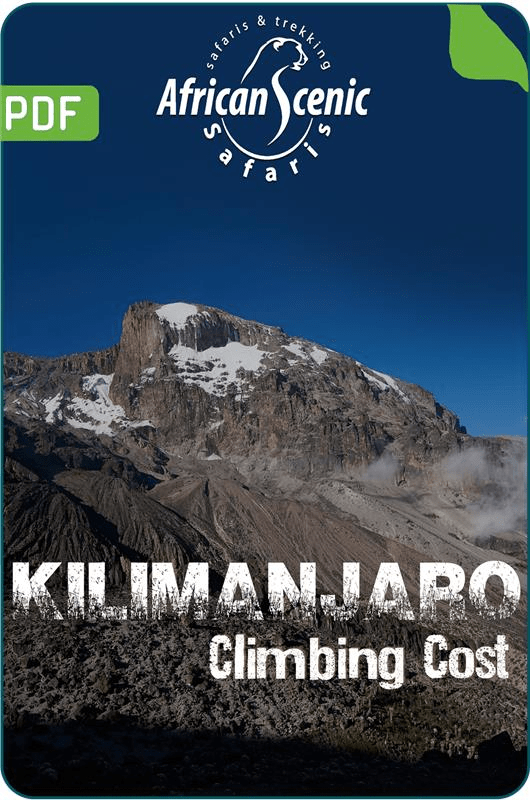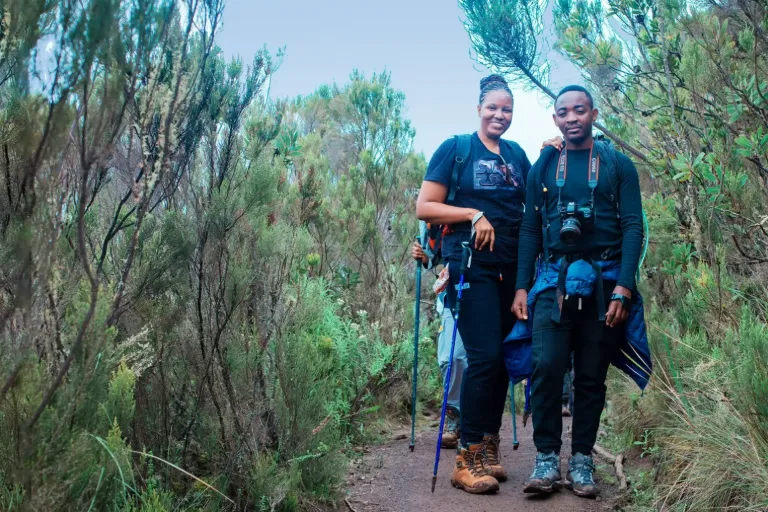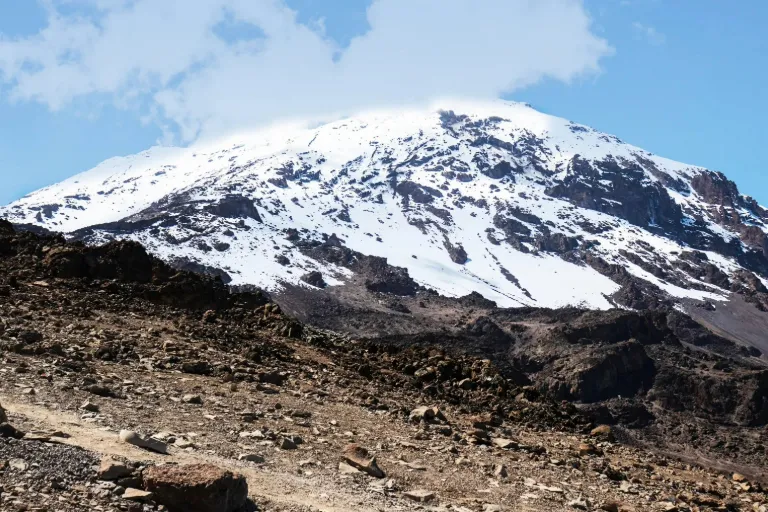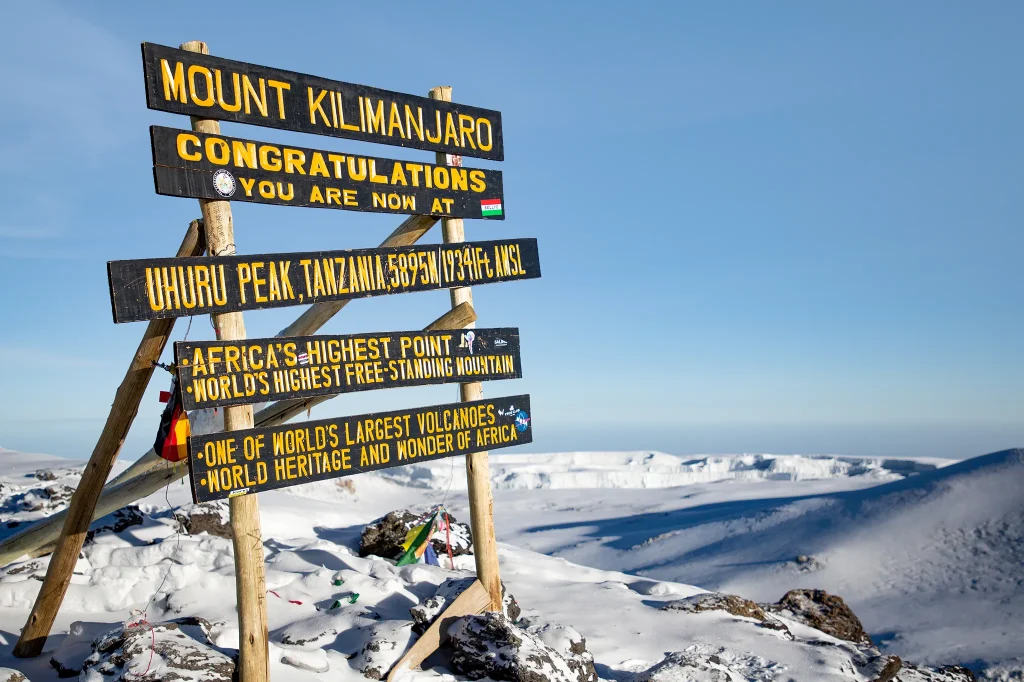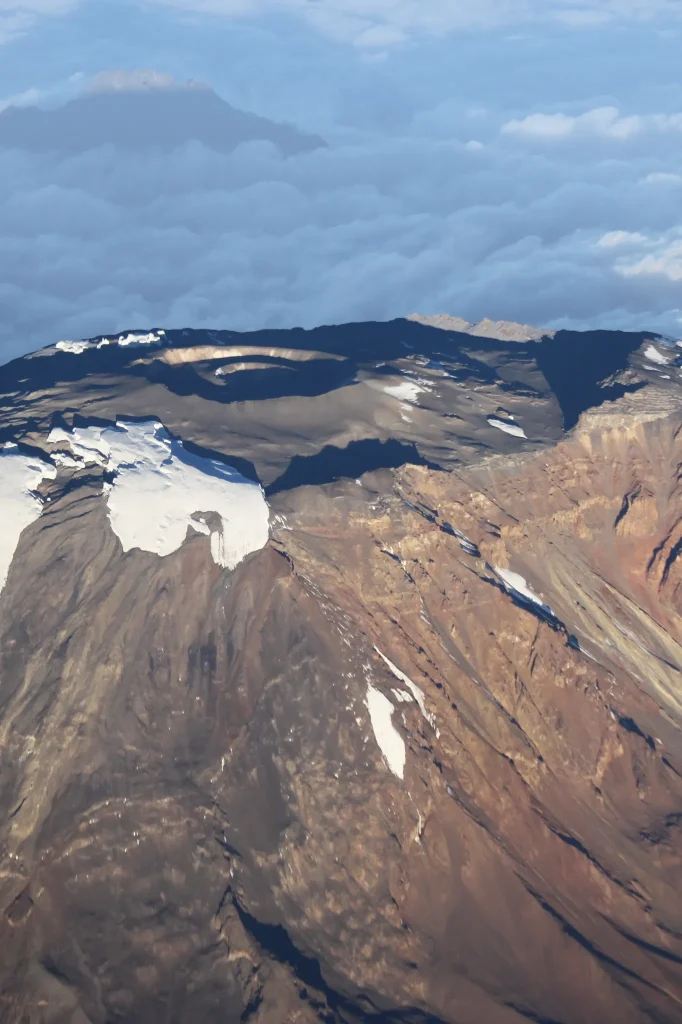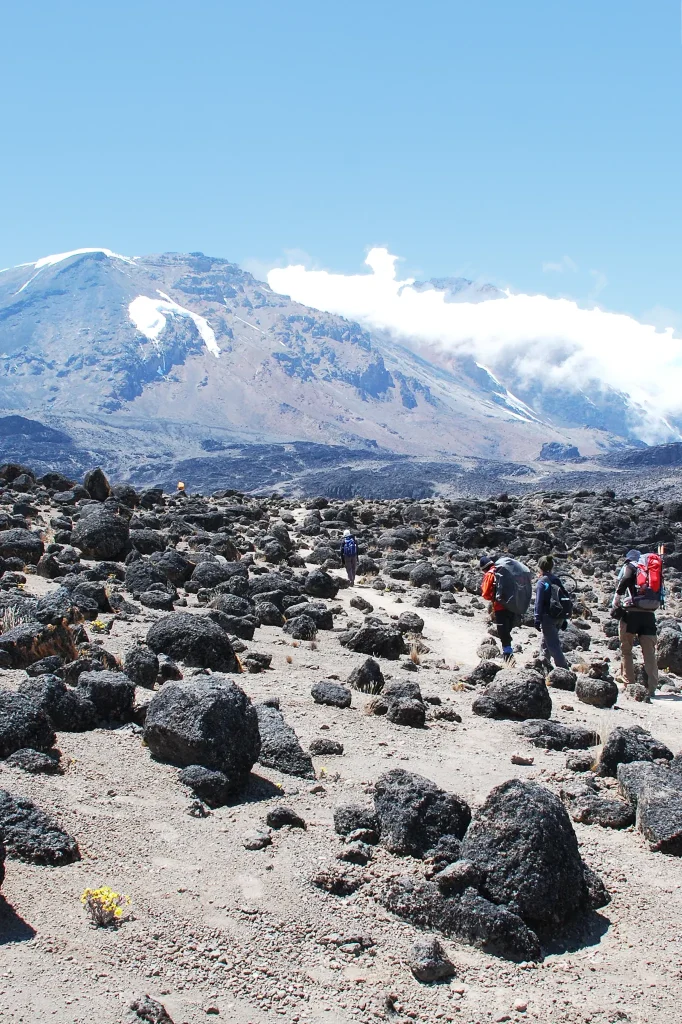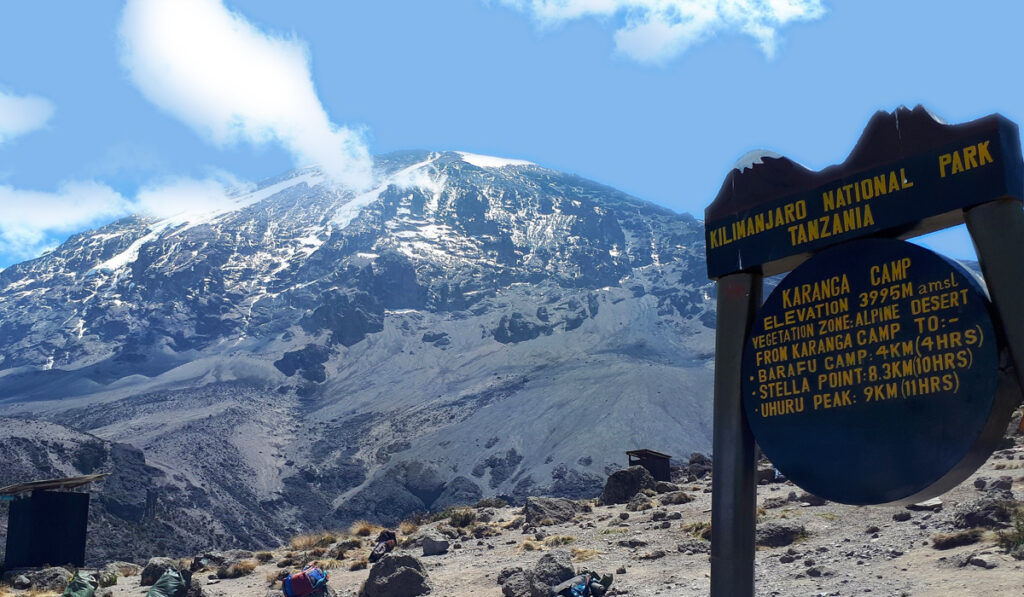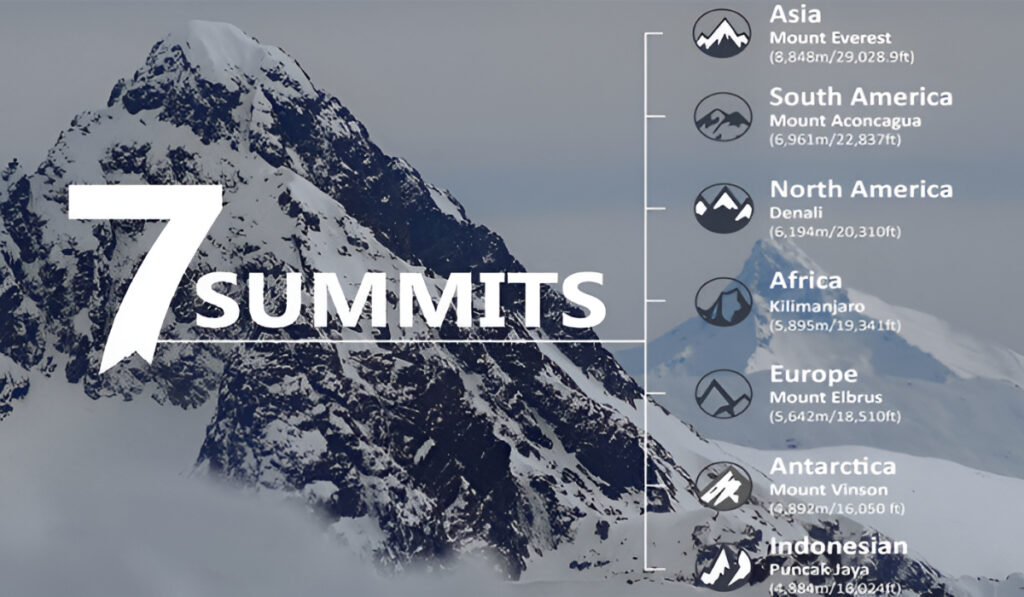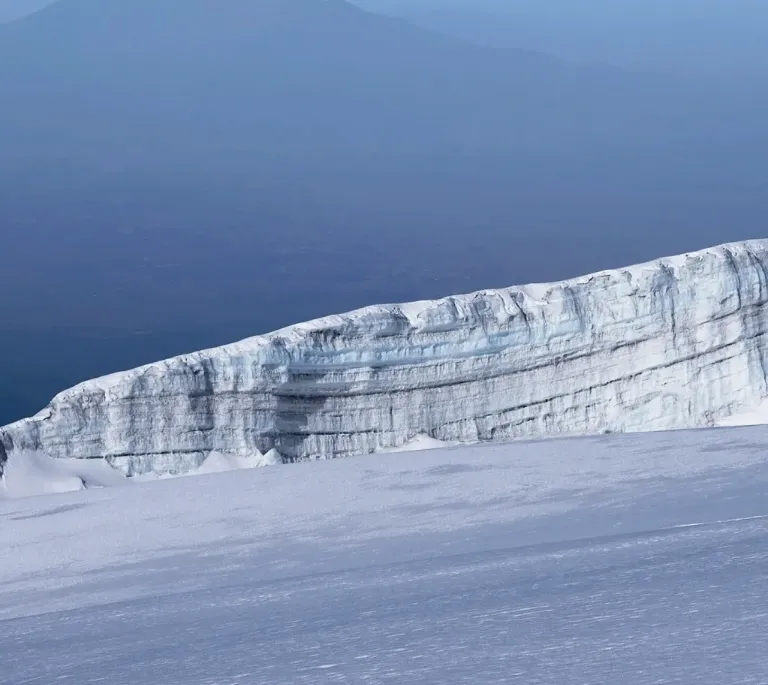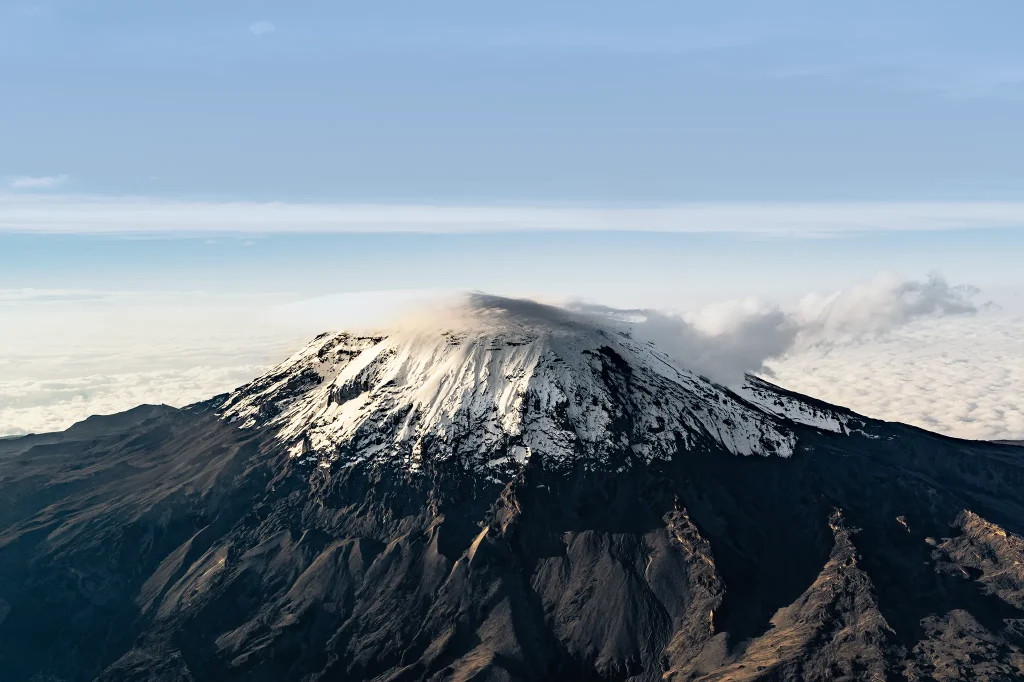Climbing Kilimanjaro is a once-in-a-lifetime adventure that requires determination, physical fitness, and mental fortitude. This Kilimanjaro Climbing Guide offers essential insights for anyone preparing to take on Africa’s highest peak.
As the highest peak in Africa, Kilimanjaro offers climbers a unique opportunity to experience a variety of landscapes, from lush rainforests to rugged alpine deserts. Reaching the summit of Mount Kilimanjaro feels like undertaking an adventure.
Among the six official Kilimanjaro Routes, the Machame Route remains one of the most favoured. It allows for better acclimatization with gradual altitude gain and scenic diversity. During the trek, you’ll pass through five distinct ecosystems, each shifting with elevation.
Let’s take a closer look at a 7-day Kilimanjaro climb via Machame Route and understand what each day brings during the journey.
DAY 1- The Beginning of Kilimanjaro Climbing
The climb begins much like a walk in the park. It’s very easy. The forest around is a beautiful sight. Even though this part of the stretch is easy, be sure to go slowly. Going slowly will help to tempo your body and reserve your energy for when things get tough. The uphill is like a set of terrace steps that supports the climb. We suggest you stop every 40 minutes for water and a break. Kilimanjaro Travel Tips like these can make a real difference on the trail. The ascent will affect your appetite so make sure to force down as much food as possible.
And the night sky in this stretch might be one of the greatest night skies you’ll ever see.
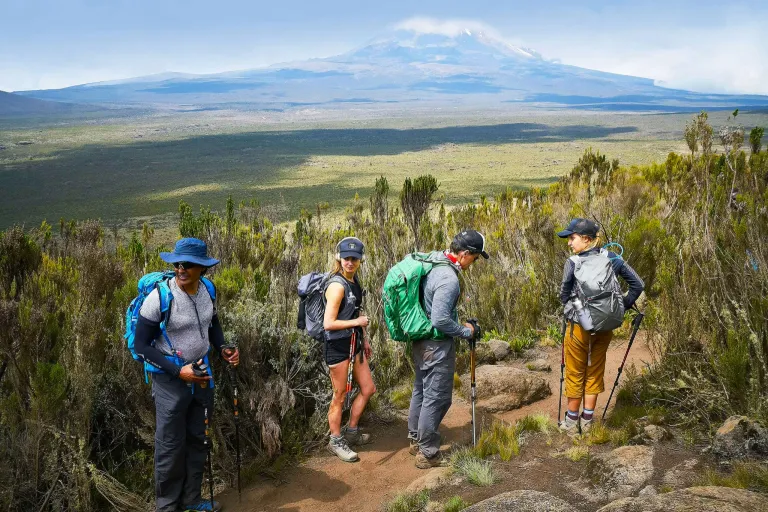
DAY 2 – One Step More to Kilimanjaro Climbing
Day 2 is when the landscape changes from lush rainforest to shrub-strewn moorland. The land becomes perfectly textured. You will have a tasty breakfast, pack up, and get your legs moving by 8:20 a.m.
On day 2, at nearly 10,000 ft above sea level, the path is much rockier than expected. It requires paying attention to where you’re walking. It is also when the peaks suddenly begin to appear. The rapid ascent to high altitude will begin to register. First, you catch sight of Mawenzi Peak. And then the snow-capped Uhuru Peak comes into view in the distance.
After dinner, you can sit out and watch the stars. The quietness of the night and the clear sky will create a tranquil moment.
DAY 3- Taking a Break
On day 3, a good and warm night’s sleep will be followed by a refreshing morning coffee. You will get to see a stretch of grasslands covered with Kilimanjaro plants. Kilimanjaro is the unmistakably shaped signature tree of Mount Kilimanjaro.
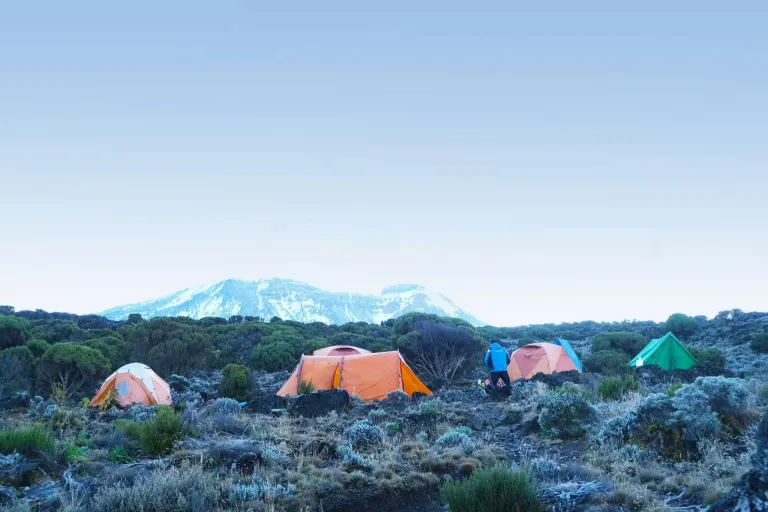
| Accommodation Type | Average Cost per Night (USD) |
| Budget Campsites | $50 – $150 |
| Mid-Range Lodges | $200 – $500 |
| Luxury Tented Camps | $600 and above |
After your lunch, resting in a warm tent in the shadow of Kilimanjaro is fantastic. But the walk does become monotonous. It’s just a barren, brown, and infinite pathway – one of those long stretches common across Kilimanjaro Climb Routes. And you have a long way to go to reach the end.
DAY 4- Don’t give up On Kilimanjaro Climbing
On day 4, after a wonderful night’s sleep – being warm makes all the difference. After the usual morning routine of freshening up and breakfast, you set out on your journey for the day.
At a height of 15,000 feet, it feels like standing on top of the world. The environment became sparse with vegetation and becomes rockier. It is a very gradual, consistent Kilimanjaro Climb.
- Off-Peak Travel: Consider the Serengeti National Park Tour during the low season for more affordable rates on accommodation and tours.
- Group Travel: Travelling in a group can significantly reduce Serengeti Safari Costs, especially when it comes to transportation and accommodation.
- Self-Drive Safaris: If you’re feeling adventurous, opt for a Self-Drive Safari In Serengeti, where you can explore the park at your own pace, saving on guided tour fees.
After several days of climbing, when travellers get exhausted, the porters sing a song to motivate them—one of the many moments that show why they’re among the Best Kilimanjaro Guides. The song goes by:
“Tembea Pole. Hakuna Matata!
Utafika Salama. Hakuna Matata!
Kunywa Maji Mengi. Hakuna Matata!
Kilimanjaro, Kilimanjaro,
Kilimanjaro, Mlima Mrefu Sana.
Walk Slowly, Slowly. No Trouble!
You’ll Get There Safe. No Trouble!
Drink Plenty Of Water. No Trouble!”
DAY 5 – Resting Under the Stars
Day 5 is a familiar routine. A warm and restful sleep followed by a morning coffee. It is also the day when it becomes harder to keep on walking.
A short acclimatization walk, then rest, and then an early dinner. This is how the day goes by. The body starts to feel the altitude, and mental focus becomes just as important as physical strength. Many climbers on Mount Kilimanjaro Guided Tours appreciate this pause to recharge and prepare for the final push.
As the sun sets, the sky fills with countless stars. Lying in your tent under this sparkling ceiling is both peaceful and energizing—reminding you how far you’ve come and what still lies ahead.
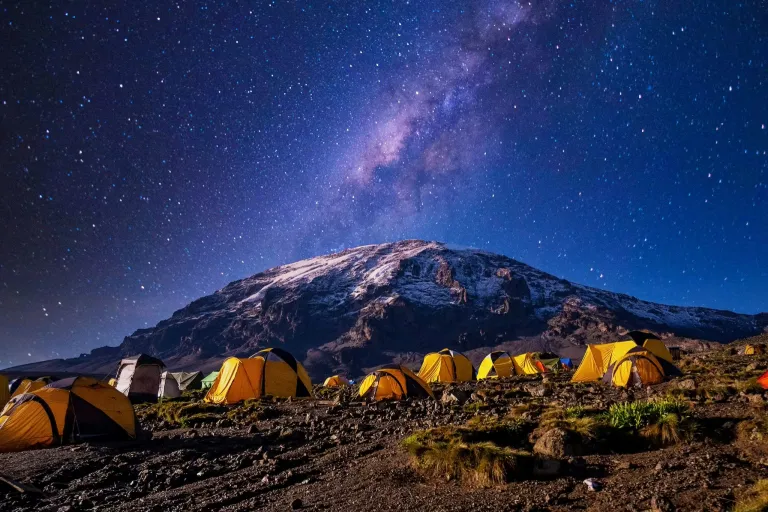
DAY 6 – Just One Last Step to Kilimanjaro Climbing
After a relaxing night’s sleep, the morning sun will provide much-needed pleasant warmth.
On day 6, you make your way to the base camp from which you will ascend the next morning. As you trek upward, the sun will provide warmth regardless of the cool temperatures.
Many of our Kilimanjaro Climbing Packages are designed to align with this structure—building stamina day by day to reach the pinnacle.
As soon as you reach the base camp, you must prepare for the next day’s challenge. Dinner early and in bed by 7:00 p.m. You have to rise as early as 3 a.m. to head to the summit!
DAY 7 – Standing on the Top
All the hard work of the past few days has finally brought you to the summit night. Only about 4,000 feet are needed to go up and you will finally be able to reach the summit.
The wind is cold and the conversation is minimal. The climbing is hard but everyone just keeps moving forward. Following a reliable Kilimanjaro Climbing Guide is a reliable way that helps you understand what to expect on this intense final push.
When you finally reach Stella’s Point, the hard climbing is over. The joy of having reached this point is overwhelming, and a very emotional moment.
And as you finally reach the Kilimanjaro Summit and Uhuru Peak, you will feel an immense sense of satisfaction.
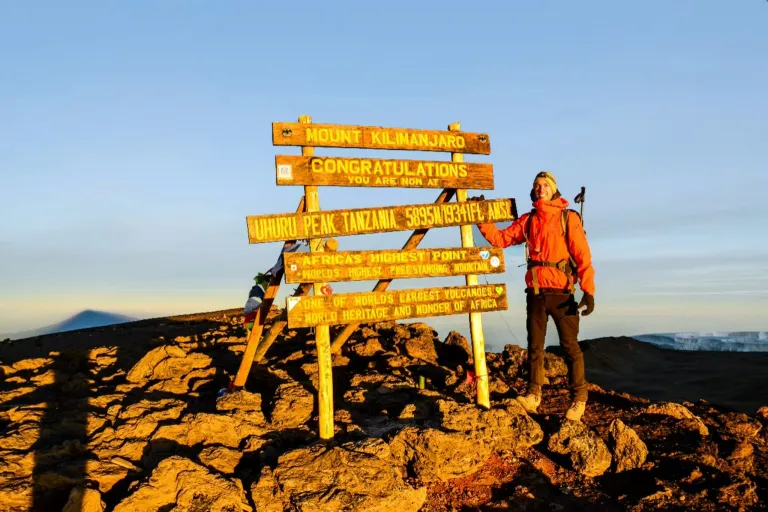
Descent Day – Retuning with Achievement
The descent isn’t easier. You are going downhill and it’s challenging in its way. You have to watch your every step. The descent follows a different path, which is one of the many Kilimanjaro Climb Routes available for climbers. You can feel the difference. The steps are easier, and the heart is filled with excitement!
Final Steps to the Summit!
Climbing Mount Kilimanjaro through the Machame Route is one of the best decisions. It is a day you will remember for a lifetime. Standing on the top is a different feeling—it’s a sense of achievement. Standing at the peak, you will realize that all your hard work and exhaustion are worth it. As the saying goes, the best view comes after the hardest climb. This Kilimanjaro Climbing Guide gives you a clear idea of what to expect along the way.
Ready to take the next step?
Plan your climb with African Scenic Safaris—where every route is tailored, every detail is real, and your summit moment starts with us.



